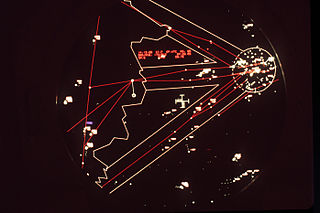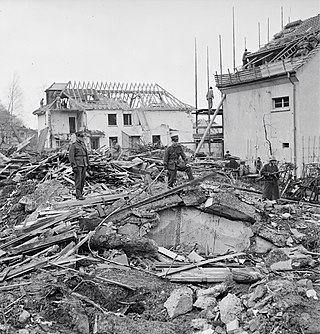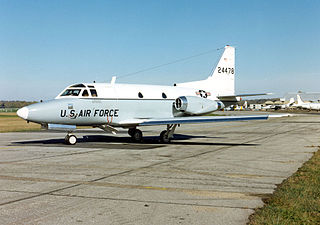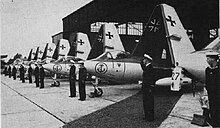
Berlin Tegel "Otto Lilienthal" Airport was the former primary international airport of Berlin, the federal capital of Germany. The airport was named after aviation pioneer Otto Lilienthal and was the fourth busiest airport in Germany, with over 24 million passengers in 2019. In 2016, Tegel handled over 60% of all airline passenger traffic in Berlin. The airport served as a base for Eurowings, Ryanair as well as easyJet. It featured flights to several European metropolitan and leisure destinations as well as some intercontinental routes. It was situated in Tegel, a section of the northern borough of Reinickendorf, eight kilometres northwest of the city centre of Berlin. Tegel Airport was notable for its hexagonal main terminal building around an open square, which made walking distances as short as 30 m (100 ft) from the aircraft to the terminal exit.

Berlin Tempelhof Airport was one of the first airports in Berlin, Germany. Situated in the south-central Berlin borough of Tempelhof-Schöneberg, the airport ceased operating in 2008 amid controversy, leaving Tegel and Schönefeld as the two main airports serving the city for another twelve years until both were replaced by Berlin Brandenburg Airport in 2020.

Josef Kammhuber was a career officer who served in the Imperial German Army, the Luftwaffe of Nazi Germany and the post-World War II German Air Force. During World War II, he was the first general of night fighters in the Luftwaffe.

The German Air Force is the aerial warfare branch of the Bundeswehr, the armed forces of Germany. The German Air Force was founded in 1956 during the era of the Cold War as the aerial warfare branch of the armed forces of West Germany. After the reunification of West and East Germany in 1990, it integrated parts of the air force of the former German Democratic Republic, which itself had been founded in 1956 as part of the National People's Army. There is no organizational continuity between the current German Air Force and the former Luftwaffe of the Wehrmacht founded in 1935, which was completely disbanded in 1945/46 after World War II. The term Luftwaffe that is used for both the historic and the current German air force is the German-language generic designation of any air force.

Korean Air Lines Flight 902 was a scheduled Korean Air Lines flight from Paris to Seoul via Anchorage. On 20 April 1978, the Soviet air defense shot down the aircraft serving the flight, a Boeing 707, near Murmansk, Soviet Union, after the aircraft violated Soviet airspace.

The Republic F-84F Thunderstreak was an American swept-wing turbojet-powered fighter-bomber. The RF-84F Thunderflash was a photo reconnaissance version.

Seaboard World Airlines Flight 253A was a military charter flight carrying 214 American troops bound for South Vietnam. On July 1, 1968, the plane was intercepted by Soviet jets after it unintentionally violated Soviet airspace. It was forced to land on one of the Soviet-controlled Kuril Islands with all 238 Americans aboard being detained for two days.

During the Cold War era (1945–1991), the West Berlin air corridors, also known as the Berlin corridors and control zone, were three regulated airways for civil and military air traffic of the Western Allies between West Berlin and West Germany passing over East Germany's territory. The corridors and control zone were physically centered on and under control of the all-Allied Berlin Air Safety Center (BASC) in West Berlin. The airspace within these corridors was used by US, UK and French-registered non-combat aircraft belonging to these countries' armed forces and airlines operated by pilots holding those countries' passports. In addition, it was also used by LOT Polish Airlines for regular scheduled services from Warsaw to London and Paris via Schönefeld Airport to the south of East Berlin.

On 4 July 1989, a pilotless MiG-23 jet fighter of the Soviet Air Forces crashed into a house in Bellegem, near Kortrijk, Belgium, killing one person. The pilot had ejected over an hour earlier near Kołobrzeg, Poland, after experiencing technical problems, but the aircraft continued flying for around 900 km (600 mi) before running out of fuel and crashing into the ground.

During World War II the neutral country of Switzerland underwent initially sporadic bombing and aerial combat events that became more frequent during the later stages of the war.

The 1948 Gatow air disaster was a mid-air collision in the airspace above Berlin, Germany that occurred on 5 April, sparking an international incident. A British European Airways (BEA) Vickers VC.1B Viking airliner crashed near RAF Gatow air base, after being struck by a Soviet Air Force Yakovlev Yak-3 fighter aircraft. All ten passengers and four crew on board the Viking were killed, as was the Soviet pilot. The disaster resulted in a diplomatic standoff between the United Kingdom and United States on one hand, and the Soviet Union on the other, and intensified distrust leading up to the Berlin Blockade in the early years of the Cold War.

Martin Harlinghausen was a German military aviator and general. Harlinghausen specialised in maritime interdiction and anti-warship operations. During World War II Harlinghausen was the leading exponent of anti-ship warfare with the destruction of 22 ships credited to him.

The Berlin Blockade was one of the first major international crises of the Cold War. During the multinational occupation of post–World War II Germany, the Soviet Union blocked the Western Allies' railway, road, and canal access to the sectors of Berlin under Western control. The Soviets offered to drop the blockade if the Western Allies withdrew the newly introduced Deutsche Mark from West Berlin.

Lechfeld Air Base is a German Air Force (Luftwaffe) base located 1 km east of Lagerlechfeld in Bavaria, about 20 km south of Augsburg on the Bundestrasse 17.

On 28 January 1964, an unarmed T-39 Sabreliner aircraft of the United States Air Force (USAF) was shot down while on a training mission over Erfurt, East Germany, by a MiG-19 jet fighter of the Soviet Air Force. The occupants of the aircraft were Lieutenant Colonel Gerald K. Hannaford, Captain Donald Grant Millard and Captain John F. Lorraine. All three died, becoming direct casualties of the Cold War in Europe.

Taktisches Luftwaffengeschwader 31 "Boelcke", formerly known as Jagdbombergeschwader 31, is a fighter-bomber wing of the German Air Force (Luftwaffe). The wing is based in west Germany at Nörvenich Air Base. Its role are Air Interdiction, Offensive Counter Air and Close Air Support. The wing flies the Eurofighter Typhoon.

Jagdbombergeschwader 32 was a fighter-bomber wing of the German Air Force (Luftwaffe). The wing was based in the south of Germany at Lechfeld Airbase and flew Tornado IDS and Tornado ECR planes in the Suppression of Enemy Air Defenses role.

Siegfried Barth was a German bomber pilot in the Luftwaffe during World War II and commander of the fighter-bomber wing Jagdbombergeschwader 32 of the German Air Force. He was a recipient of the Knight's Cross of the Iron Cross, awarded by Nazi Germany to recognise extreme battlefield bravery or successful military leadership. As a Bundeswehr officer, he served at the NATO Supreme Headquarters Allied Powers Europe (SHAPE) from 1969 to 1972.

A Turkish Air Force F-16 fighter jet shot down a Russian Sukhoi Su-24M attack aircraft near the Syria–Turkey border on 24 November 2015. According to Turkey, the aircraft was fired upon while in Turkish airspace because it violated the border up to a depth of 2.19 kilometres for about 17 seconds after being warned to change its heading ten times over a period of five minutes before entering the airspace. The Russia Defence Ministry denied that the aircraft ever left Syrian airspace, claiming that their satellite data showed that the Sukhoi was about 1,000 metres (1,100 yd) inside Syrian airspace when it was shot down.






















